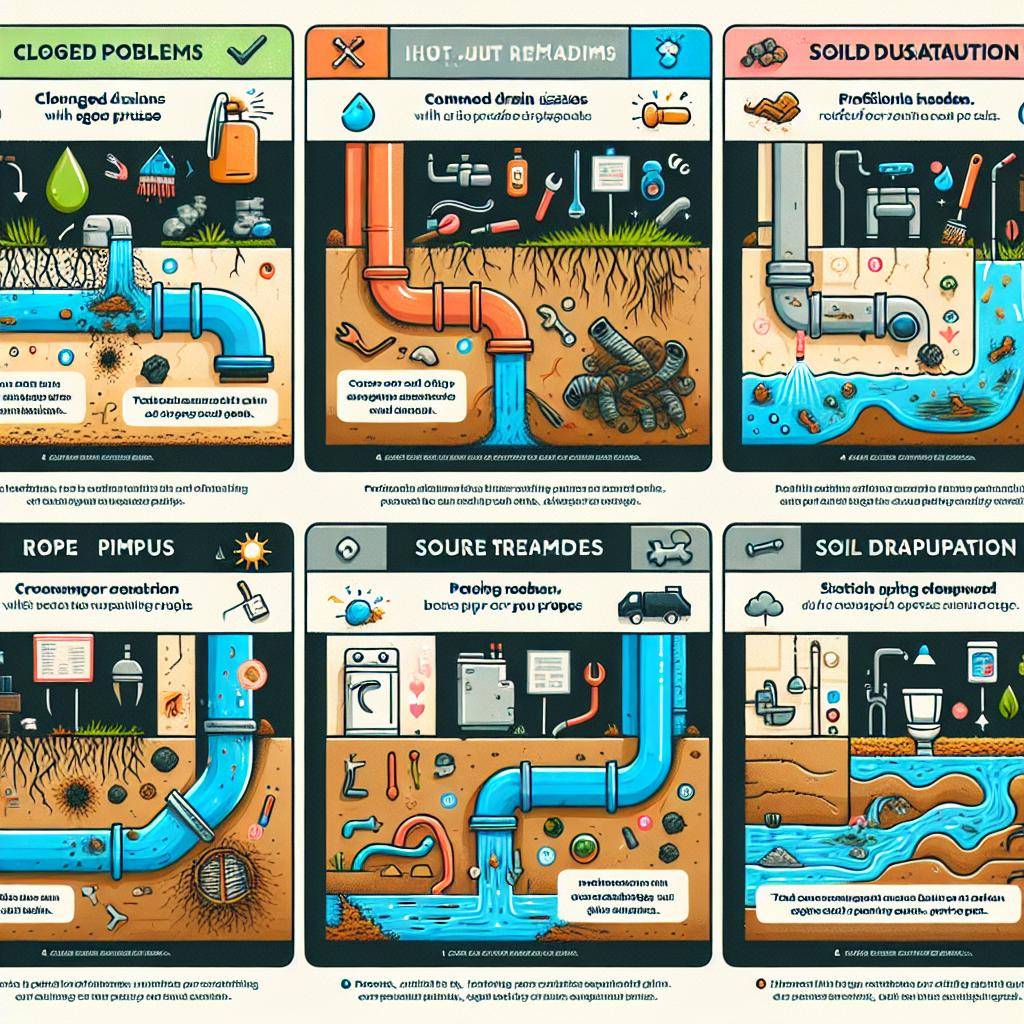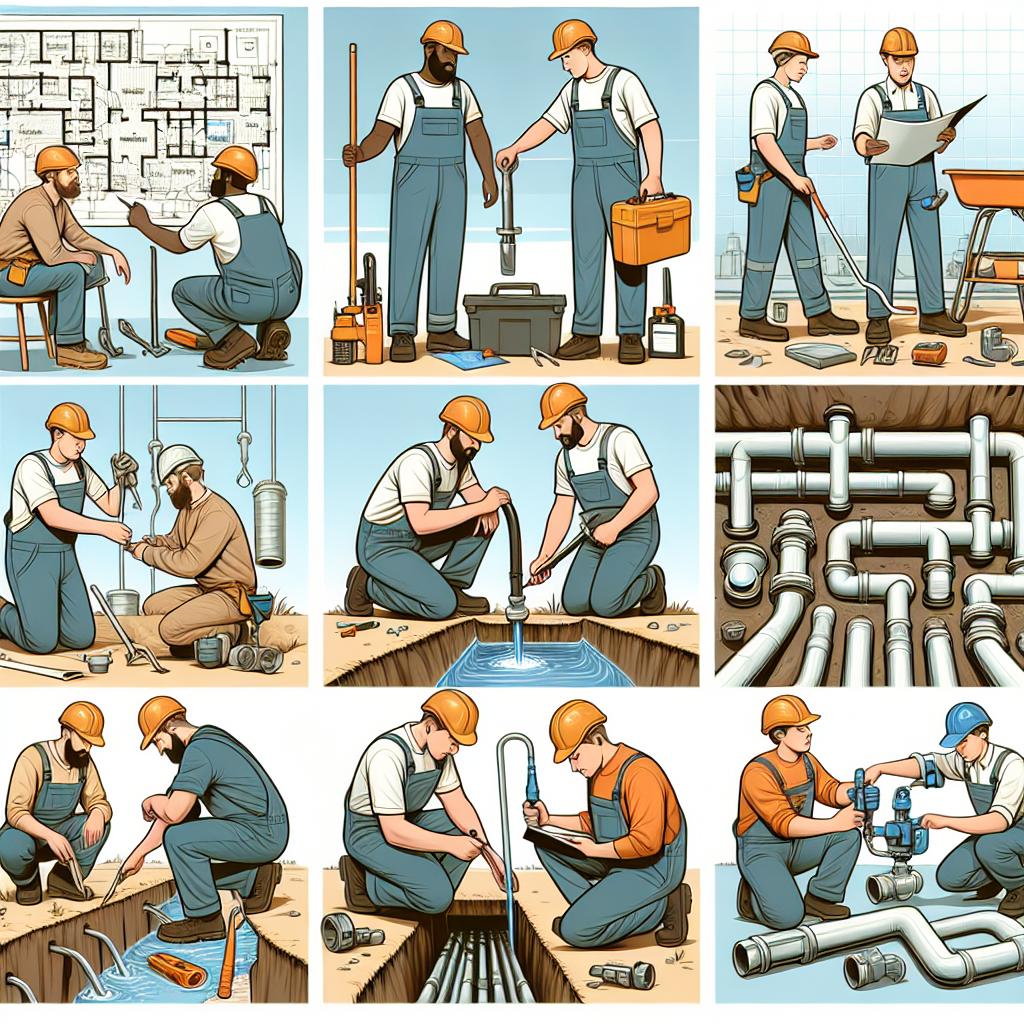When the sweltering heat of summer beckons, a mini-split air conditioning unit can be a homeowner’s best ally in the quest for indoor comfort. However, while these compact systems work diligently to cool our living spaces, there’s an often-overlooked aspect that is vital for their optimal performance: proper drainage. Just as a well-designed riverbank guides water away from a flood-prone area, ensuring that your mini-split AC unit has effective drainage safeguards against potential pitfalls. From preventing unwanted moisture buildup to extending the lifespan of your system, understanding the significance of drainage is crucial. In this article, we will explore the essential steps you can take to ensure your mini-split AC unit operates smoothly, efficiently, and free from the frustrations that inadequate drainage can bring. Join us as we delve into best practices, common issues, and expert tips for maintaining the perfect climate in your home.
Understanding the Importance of Drainage in Mini Split AC Systems
Proper drainage is a critical aspect of mini split AC systems, as it ensures that excess water is efficiently removed from the unit. These systems operate by cooling the air through a refrigeration process that inevitably produces condensate. If this condensate is not adequately managed, it can lead to various issues such as water damage, mold growth, and decreased efficiency. Regularly checking the drainage system, including the condensate drain line and pan, is essential to maintain optimal performance and longevity of your unit.
Furthermore, neglecting drainage can result in more severe problems, leading to costly repairs. A clogged or improperly installed drain can cause overflow, which may damage the internal components of the AC system. In addition, stagnant water can become a breeding ground for bacteria, affecting the air quality in your home. To prevent these risks, it’s important to:
- Inspect drain lines for clogs or leaks periodically.
- Clean the condensate drain pan regularly.
- Ensure correct installation of the drainage system according to manufacturer specifications.

Identifying Common Drainage Issues and Their Solutions
Proper drainage for mini split AC units is essential to prevent water damage and ensure optimal performance. Common drainage issues include:
- Clogged Drains: Debris, dirt, or mold can accumulate in the drain line, restricting water flow.
- Poor Installation: Incorrect slope or angles in the drainage piping can lead to improper water discharge.
- Frozen Coils: Ice build-up on the evaporator coils can cause excess water to drip once it melts.
To address these problems, regular maintenance and inspections are crucial. For clogged drains, consider using a wet/dry vacuum to clear blockages, or use a plumbing snake. If you suspect installation issues, revisiting the orientation of the unit and its drainage components may be necessary. Additionally, monitoring temperature settings to prevent freezing can help minimize excess water production.
Incorporating preventative measures can save you time and reduce the likelihood of serious issues. Investing in a drain pan with a float switch can provide a safety mechanism that automatically shuts off the AC when water rises too high. A scheduled cleaning regimen for the drain line and coils—ideally at the beginning of each cooling season—can greatly enhance efficiency and prolong the unit’s lifespan. Here’s a brief overview of possible solutions:
| Issue | Solution |
|---|---|
| Clogged Drain | Cleaning with a vacuum or plumbing snake |
| Poor Installation | Adjusting the slope and alignment of the drain |
| Frozen Coils | Adjusting thermostat settings and checking airflow |
With these solutions, you’ll maintain not only the performance but also the integrity of your mini split AC system.

Best Practices for Installing and Maintaining Drainage Lines
To ensure optimal performance of your mini-split AC unit, proper installation and maintenance of drainage lines are crucial. Begin by selecting appropriate materials for your drainage system; using PVC or flexible tubing that can withstand temperature changes and resist wear over time is advisable. During installation, it’s important to maintain a slight slope in the drainage lines to facilitate smooth flow and prevent clogs. Additionally, secure all joints with waterproof sealant to avoid leaks and water damage to surrounding areas.
Regular maintenance of the drainage lines can save you from costly repairs later. Schedule periodic checks to remove debris and buildup that can impede water flow. Flushing the lines with a mixture of vinegar and water every few months can help eliminate any accumulated mold or algae. When performing these tasks, take the time to inspect for any visible signs of wear or damage. If repairs are needed, addressing them promptly will extend the life of both your drainage system and your mini-split AC unit.

Enhancing Performance with Regular Drainage Inspections and Upkeep
Regular drainage inspections are crucial for the long-term performance of your mini split AC unit. Accumulated debris or algae in the drainage system can lead to blockages, causing the unit to work harder and less efficiently. By establishing a routine inspection schedule, you can catch potential issues before they escalate. Consider the following key benefits of maintaining your drainage system:
- Increased Efficiency: A clear drainage system allows for optimal airflow and temperature regulation.
- Extended Lifespan: Regular upkeep reduces wear and tear on components, prolonging the overall life of your unit.
- Prevent Water Damage: Ensuring proper drainage helps mitigate the risk of leaks and subsequent property damage.
In addition to inspections, routine maintenance should include cleaning the drain lines and checks for any signs of corrosion or wear. This proactive approach not only helps maintain performance but also enhances the indoor air quality by preventing mold growth associated with stagnant water. Below are some recommended maintenance tasks:
| Task | Frequency | Tools Needed |
|---|---|---|
| Inspect Drainage Lines | Monthly | Flashlight, Inspection Camera |
| Clean Drain Pan | Every 3 Months | Soap, Water, Cloth |
| Flush Drain Lines | Every 6 Months | Vinegar or Bleach, Hose |
Q&A
Q&A: Ensuring Proper Drainage for Your Mini Split AC Unit
Q1: What is a mini split AC unit and how does it work?
A1: A mini split AC unit is a type of air conditioning system that consists of an indoor and an outdoor unit. The indoor unit cools the air, while the outdoor unit dispels heat. The two units are connected by refrigerant lines. Unlike central AC systems, mini splits do not require ductwork, making them more flexible and energy-efficient.
Q2: Why is proper drainage important for a mini split AC unit?
A2: Proper drainage is crucial for the efficient operation of a mini split AC unit. During the cooling process, the unit removes humidity from the air, which condenses into water. If this condensate is not drained properly, it can lead to water pooling, which may cause damage to the unit, promote mold growth, or lead to other moisture-related issues. Ultimately, improper drainage can compromise the comfort of your indoor environment.
Q3: What are the signs that the drainage system of my mini split is not functioning properly?
A3: Look for signs such as water pooling around the indoor unit, drips or leaks from the indoor unit, unusual noises (like gurgling), or increased humidity levels in the room. Furthermore, you may notice a decrease in cooling efficiency, as excess water can obstruct the smooth operation of the unit.
Q4: How can I ensure that my mini split AC unit has proper drainage?
A4: Ensure that the drainage pipes are installed at a downward angle to facilitate proper flow. Regularly inspect the condensate drain line for clogs, and clean it if necessary. Seasonal maintenance, including flushing the drain line and checking the indoor unit’s water pan, can help prevent issues. Additionally, use a wet/dry vacuum to remove any blockages carefully if you discover a clog.
Q5: What maintenance steps should I take to maintain proper drainage?
A5: Regularly check and clean the filters in your mini split AC unit, as dirty filters can lead to increased condensation. Inspect the drainage pan for standing water and clean it if you notice any mold or algae. Additionally, annually service your unit through a professional technician to ensure all components, including the drainage system, are functioning optimally.
Q6: Can I perform any DIY fixes if I notice drainage issues?
A6: Yes, you can perform some basic DIY fixes, such as clearing clogs in the condensate drain line using vinegar or a wet/dry vacuum. You can also ensure that the unit is mounted correctly for optimal drainage. However, for more significant issues or if you feel uncertain, it’s best to consult a professional to avoid causing further damage.
Q7: How can incorrect installation affect drainage?
A7: Incorrect installation can lead to drainage issues. If the indoor unit is not leveled properly, water may not flow into the drain pan as intended. Additionally, if the drain line is kinked or improperly connected, it can obstruct the flow of water. Ensuring a professional installation will help mitigate these issues from the start.
Q8: Is there any long-term solution for preventing drainage problems?
A8: Investing in high-quality mini split systems that come with advanced drainage technologies can mitigate future issues. Additionally, implementing moisture-sensing controls can help manage excess moisture. Regular maintenance and timely inspections are the best long-term strategies for ensuring your system’s drainage remains effective.
Q9: What should I do if I find mold or mildew in the drainage system?
A9: If you discover mold or mildew in the drainage system, it’s important to address it promptly. Use a mixture of water and bleach to clean affected areas, but remember to prioritize safety – wear gloves and a mask. If you are unsure or if the problem persists, contact a professional to thoroughly clean and sanitize the system.
Q10: How often should I check my mini split AC unit’s drainage system?
A10: It’s advisable to check your mini split AC unit’s drainage system at least twice a year, ideally before and after the cooling season. Additional inspections during peak usage can detect any irregularities early on, saving you from unexpected repairs and ensuring your unit operates effectively all summer long.
In Summary
ensuring proper drainage for your mini split AC unit is not merely a maintenance task; it’s an essential step in prolonging the lifespan and efficiency of your cooling system. By taking the time to understand the installation process, regularly inspect drainage lines, and address any potential issues promptly, you can safeguard your home against water damage and costly repairs. As you embrace the comfort of a well-functioning mini split, remember that a little attention to detail can go a long way. So, whether you’re a seasoned DIY enthusiast or a first-time AC owner, empower yourself with knowledge and take proactive measures. With the right approach to drainage, you’ll not only enhance your unit’s performance but also enjoy a cool retreat when the heat is on. Happy cooling!
